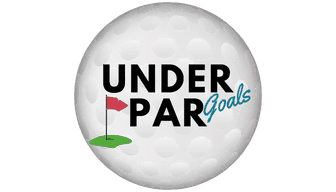While fairway woods and hybrids look similar, they are constructed different and serve very different roles in the bag of a golfer.
The main difference between fairway woods and hybrids is that fairway woods have a broader sole and larger head than hybrids and are hit further, but with a lower trajectory while hybrids are often more forgiving and easier to hit than long irons or fairway woods.
Hybrids are typically used to replace some of the more difficult to hit long irons in the average golfer’s bag.
If you are looking to add a fairway wood to your bag, pick the guide below that best fits your game:
- Best Hybrids For High Handicappers
- Best Fairway Woods For High Handicappers
- Best Fairway Woods For Mid Handicappers
Fairway Wood vs. Hybrid Construction
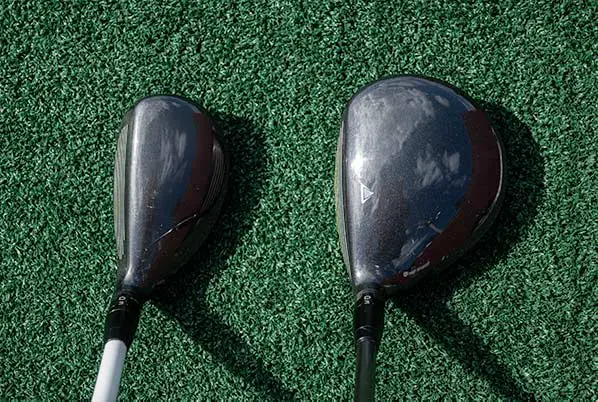
Fairway Woods
A fairway wood encompasses many of the same characteristics as a driver, but can be hit easier from places besides the tee. Woods are made with a similar, but smaller head than drivers and have higher lofts.
Compared to other clubs in your bag, a fairway wood will have the longest shaft outside of a driver. With the longer shaft, your swing and approach must be different, but we’ll save that for later.
With larger heads and lower lofts than every club in your bag, fairway woods are designed to “sweep” across the grass and launch at a lower angle. This combination of loft and contact also leads to longer shots, making it an attractive alternative for those seeking more accurate tee shots.
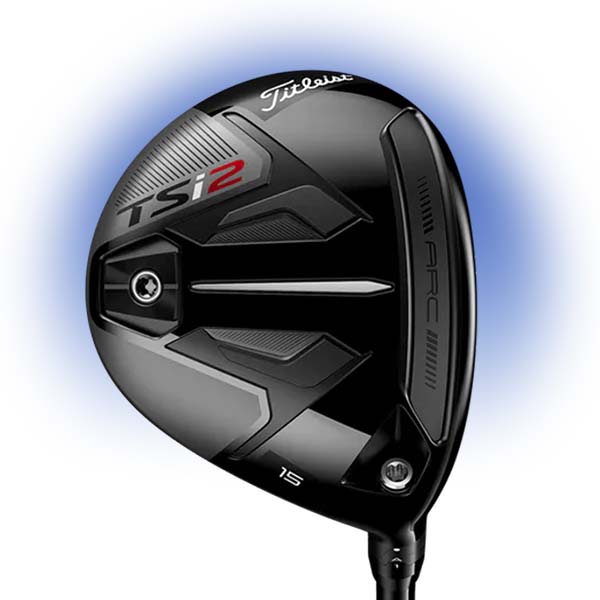
Recommended Fairway Wood
Titleist Tsi2
A deeper, lower CG and the new Active Recoil Channel 4.0 produce a consistently higher, faster launch with great forgiveness.
Hybrids
Hybrids are designed to replace long (and even mid) irons. Compared to fairway woods, the shafts of hybrids are shorter and the heads are smaller. By contrast, a hybrid will be longer and have a bigger head than any of your irons.
What makes hybrids suitable replacements for long irons is their deeper club heads. Due to their shape, weight is able to be more evenly distributed, strengthening contact for hits off-center. This is the main appeal of hybrids. The “sweet spot” is bigger and the whole club face is more forgiving than on a long iron, or even a fairway wood.
Besides better contact, hybrids are designed to cut through rough easier than fairway woods and launch higher. Taking a big divot with a fairway wood is often indicative of a too steep swing. The design of a hybrid helps you get under the ball, and because of this, a divot is not necessarily a bad thing.
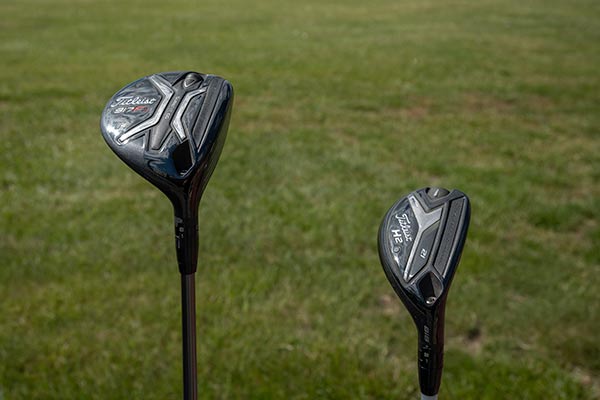
When to use a fairway wood
A fairway wood has the strongest loft in your bag, minus your driver. Because of this, it will go farther than any non-driver club.
A fairway wood can be used either off the tee or from the fairway. One of the most important factors in deciding whether or not to pull a fairway wood is if the conditions are ideal. Due to head shape and loft, most players will struggle to get woods in the air from the rough.
For many golfers, driving with a 3 wood can have a significant positive effect on your scores.
Any potential benefit of distance is wiped out if you are unable to make good contact. To prevent yourself from having a long third shot in on a par-4 or 5, you’d be better off hitting a club you are more consistent with from a bad lie and taking the guaranteed distance.
As you make your way up through your clubs, they progressively roll longer (a 7-iron rolls longer than an 8, etc.). When you use a fairway wood, you should expect a significant amount of roll. It is difficult to stop a ball on the green hit by a fairway wood that also lands on the green.
With a wood, you must land the ball short and run it up. Things like fairway bunkers and well protected greens make this more difficult and might force you to hit a different type of shot or club.
Due to their low lofts and traditional flight path, a fairway wood is the least effected type of club when going against the wind. Essentially, you’re keeping the ball under the wind and relying on roll after carry. In most circumstances, the wind is stronger at higher altitudes due to a lack of obstacles, which on the golf course takes the form of trees.
When to use a hybrid
A hybrid can be hit from anywhere on the course with any type of shape. When taking a full swing, it will naturally be a high, arcing shot. Should you move the ball back in your stance and close the club face, you can just as easily hit a punch shot.
Since hybrids are so forgiving and carry longer than any of your irons, it is suitable to hit off the tee in place of a driver. This is especially true on shorter holes or for tee shots where placement trumps distance.
Despite the low lofts on 3 and 4-hybrids, most swings will have less roll than with a driver or fairway wood. Many skilled players can even get hybrids to stop as quickly as they would a mid-iron. Thanks to the steep landing angle, it is easy to clear greenside bunkers and hazards.
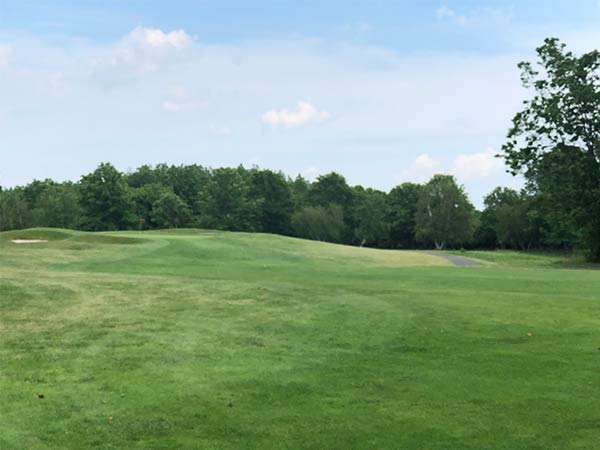
One major benefit of hybrids that often flies under the radar is the longer shaft than irons. Since you have more shaft to work with, you can easily take a normal swing if you choke down when the ball is above your feet. With the forgiving club face, hybrids can be hit from any uneven terrain.
Some people even use hybrids to chip from the fringe or from a short distance in the fairway. This type of shot utilizes the “bump and run” method where the ball hardly gets off the ground, if at all. This strategy allows you to “putt” with more power, but less effort. Many people like this style as it is easier to control direction since it is a smaller swing compared to pitched or flopped chip shots.
When you take into consideration all of the places it can be used and all of the types of shots that can be hit, a trusted hybrid can shave multiple strokes off your score each round.
Hybrid Vs. Wood Distance Chart
If you’re like me then you want to see some numbers to help you make a decision. There are a lot of numbers out there by club manufacturers that are going to claim their hybrids go farther than the competition, but that’s mostly just marketing. So I checked out some Trackman data.
Here are the PGA Tour averages. I used these numbers because these guys hit all their clubs solid, so any differences are more likely to represent the differences in the clubs rather than the player’s inconsistency.
| 3-wood | 5-wood | Hybrid (15°-18°) | |
|---|---|---|---|
| Club Speed (mph) | 107 | 103 | 100 |
| Ball Speed (mph) | 158 | 152 | 146 |
| Smash Factor | 1.48 | 1.47 | 1.46 |
| Spin Rate (rpm) | 3655 | 4350 | 4437 |
| Max Height (yds) | 30 | 31 | 29 |
| Landing Angle | 43° | 47° | 47° |
| Carry (yds) | 243 | 230 | 225 |
Should I Carry A 5-wood or a 3-hybrid?
I think the biggest takeaway from these numbers is how close the 5-wood and hybrid numbers are. Keep in mind that a 5-wood is typically around 19° of loft and uses a longer shaft. So a hybrid should be easier to hit and get you very similar distances. In addition, if you look at the descent angle, you can see that the balls are coming into the green the same (and with more spin) which means that you’ll hold more greens as well.
But, that doesn’t mean you should replace all your woods. The 3-wood is clearly giving these players more distance. That club is closer to the driver than the irons. So taking a 3-wood out of the bag could put a lot of long approach shots out of reach.
Based on this data, it seems like a 3-wood and 15°-18° hybrid would be a great combo.
Of course, you’re not a PGA Tour player. So while you can use this hybrid vs. wood distance chart as a guideline, you should still get out there and see which type of club you are most comfortable with.
For the average golfer, being comfortable with the club is much more of a factor than the club itself.
Setup and swing differences
Fairway Wood
Setting up to hit a fairway wood is very similar to how you would approach a shot with your driver. The ball should be placed just inside the front foot and the club head should brush across the top of the grass at contact.
Off the tee, a fairway wood is still placed on a tee, but lower than you would with a driver. This is because of the smaller head size. Most golfers place the ball anywhere from just slightly off the ground to an inch or so in the air. This is based on personal preference and is up to you to find your sweet spot.
From the fairway, the ball should still be towards your front foot. On this type of shot, the ideal contact point is right at the ball on a level angle. In most cases, you will either not take a divot, or if you do, it will be small.
One of the most common misses is topping the ball by coming up too early, or making too much of an effort to not take a divot. Like with all shots, you need to keep your head down and swing through the ball.
Hybrid
Hitting a hybrid is no different than hitting a long iron. The ball should be placed in the middle of your stance, slightly towards your front foot. Be careful not to place it too close to your front foot as you want to be hitting down on the ball.
Unlike with a fairway wood, solid contact with a hybrid will leave behind a small divot. If your divot is large and deep, yes, you chunked it. While you should not make contact at as steep of an angle as you would a wedge, you do not need to sweep across the grass like you do with a fairway wood.
Off the tee, a hybrid can be treated like an iron. While you still use a tee, most golfers prefer to have it just off the ground—enough so that you make contact with the center of the club without having to go too deep into the ground.
Do hybrids replace fairway woods?
Hybrids are designed to smooth out the transition from woods to irons by combining the best feature of both. The best approach is to replace your shorter woods and longer irons with hybrids.
Which hybrids should be in your bag?
Outside of limiting the total number of clubs to fourteen or less, there are no official regulations on club combination. If you want to carry a dozen wedges or three 7-irons, you can—I just don’t recommend it.
As long as the clubs comply with official regulations, you’re in the clear.
There is no longer a stigma associated with carrying hybrids. Modern hybrids are easier to hit than long irons, and as soon as people tested this themselves, the notion slowly, but convincingly disappeared. Bottom line, to be as successful as you can, give yourself the best tools available.
For the average golfer, say somewhere in the range of an 8-15 handicap, carrying only a 3-wood and 3-hybrid is appropriate and gives you the flexibility to compose the rest of your bag the way you like.
For those with higher handicaps or who want to gain a little bit of distance, combining the one fairway wood with more hybrids is an easy solution. Adding additional fairway woods is not feasible as they are harder to hit and a 5-wood will go about the same distance as a 3-hybrid.
Rather than carrying clubs like 4, 5 and even 6-irons, replacing these clubs with hybrids leads to more consistent contact. In short, don’t carry clubs that you can’t confidently hit. If this means carrying a 7-hybrid or higher, go for it.
Golfers with single-digit handicaps tend to carry fewer fairway woods and hybrids. This is mostly because they do not need assistance getting longer irons airborne.
A lot of this boils down to personal preference. If you’re getting fitted for clubs and can’t get a 4 or 5-iron off the ground, give yourself a fighting chance and swap those irons for hybrids.
